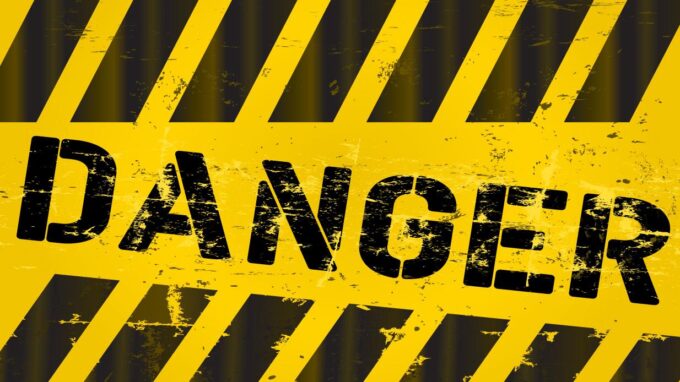Accidents can happen anytime in the workplace. They are unpredictable and costly for the business in terms of medical costs, lawsuits, and lost labor hours. You should perform a risk assessment of your office to identify hazards and mitigate them to prevent costly endeavors. Making the workplace safe should be one of the priorities for every business establishment. The following are some of the ways that you can use to reduce risk at work.
Know the Risks

Before you can reduce risk and increase safety in the workplace, you need to know the hazards. Perform a risk assessment of the office space. Check the exits and entryways, do they pose any security risk? What about during emergencies? Can workers exit the building safely? Look at your systems; are they secure from cyber-attacks? What about your employees? Can you trust them?
Run Background Checks on Employees
Your workers are your biggest asset because they are the first point of contact between the business and customers. But did you know your employees can be liabilities? One of them could be angry at the business and decide to settle the score by leaking company secrets. Companies use PreSearchInc.com for employee background checks. Use the service to know more about your workers and prevent irresponsible and disloyal behavior.
Train Employees

Perform regular security and fire drills so that employees know what to do in case of an emergency. Set clear guidelines that employees must follow to protect themselves from workplace hazards. Create awareness of safe practices in the office. During a fire drill, everyone is going to act panicked, that is just human nature. Even in that panic, your employees are going to know what to do and where to go if they have gone through the drill before. Everyone isn’t going to remain as silent as they did during their 5th grade fire drill in elementary school, but they shoud be just as effective getting out of the building and to safety. This goes for more than fires, such as an office choking situation, a severe allergic reaction, or even something more serious like an active shooter or earthquake.
Equip the Workplace with Ergonomic Furniture
If your employees spend hours sitting in front of a computer or laptop, provide them with ergonomic chairs. The furniture prevents back pains and injury. As a result, your workers will be less likely to take sick leaves due to joint pains. You can also equip the office area with standing desks so that workers can take a break from always sitting down. Desks that go from standing to sitting with the push of a button or an easy to use crank will encourage your staff to be a bit more active, a bit healthier, and a bit happier. Plus, the kick of moving your desk up and down is a bit of a show-off move that your employees will be happy to demonstrate for any friends and family who stop by the workplace.
Prioritize Health

What is one of the easiest ways to not get sick or succumb to injury, be healthy and fit. Companies that put the health and well-being of their employees first are paid back in numerous ways. A healthier company takes less sick days and a healthier office works more efficiently during business hours. Think about all the time that is spent walking in and out of the office for a smoke break multiple times per day. Tally that up and your office is losing dozens of hours of productivity before you know it.
Not every employee is going to be smoke free, but what about those who are a little overweight or harm their own immune system with an unhealthy diet? As an employer, you can’t make health decisions for your worker, but you can encourage them to be the best version of themselves possible. Providing access to a gym near the workplace, healthy snacks, or even catered lunch that is nutrient packed are little things that can add up to make a big difference.
Clear the Area Near Emergency Exits
There should be no furniture near the emergency exits. In case of fire, your employees should be able to use the exit quickly. Blocking the path to the emergency exit will prevent workers from leaving the building on time. There should also be fire extinguishers placed at strategic points in the office. When your office is nearing max capacity with employees, especially in the age of COVID where each worker will require more space than ever before, be sure to think ahead.
Cramming that one extra intern in the corner near the fire escape is not a good idea. Anytime you are planning the layout of a new office or conference room think about safety and adaptability as things change. In the past, companies have been bankrupted by lawsuits for their mismanagement of office space in times of emergency and even worse than facing legal trouble you could seriously harm or kill one of your own staff if they weren’t able to get out in case of emergency.
Limit Access to Dangerous Areas

The electrical area and server room should be off-limits because they can be a fire hazard. If access is not restricted, workers can pour something on the main switch and cause an electrical surge, which can cause a fire. The worst-case scenario is someone getting electrocuted. If the server room is left unprotected, someone can walk in and steal expensive hardware and data. Security personnel should watch over these areas all the time and limit access. There should be special clearance for staff that wants to access these areas.
Cleaning Early and Late in the Evening
Slips and falls from a wet floor can lead to severe injuries. That’s why the management should restrict cleaning to early morning and late evening hours when everybody has left the office. If there’s no one in the office, there can be no slip accidents. However, sometimes cleaning can happen during regular office hours. For example, if someone spills a drink on the floor, the janitor has to clean it up to prevent slip accidents. There should be barriers to prevent people from stepping on the wet floor.









